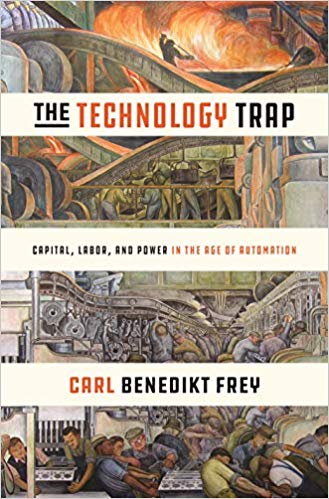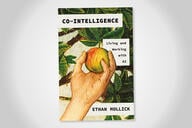You have /5 articles left.
Sign up for a free account or log in.
 The Technology Trap: Capital, Labor, and Power in the Age of Automation by Carl Benedikt Frey
The Technology Trap: Capital, Labor, and Power in the Age of Automation by Carl Benedikt Frey
Published in June of 2019.
What recently published nonfiction book should a higher ed person read, if they only have time to read one book in 2019?
A book that is not about higher ed, but is essential for higher ed?
This was a question one of my smartest - and crazy busiest - colleagues asked me a few weeks ago. I might have an answer.
The Technology Trap is written by one of the authors of a 2013 study that found that 47 percent of jobs in the US are vulnerable to displacement by automation.
Last year, I wrote that Joseph Aoun’s Robot-Proof: Higher Education in the Age of Artificial Intelligence was the higher ed book of the year. The Technology Trap is the perfect companion to Robot-Proof.
In The Technology Trap, Frey seeks to contextualize his research on the effect of robotics and artificial intelligence on the future of employment by looking at the past. The Technology Trap is the book for all of us who have ever wondered about what happened to all the farmers after industrialization and the introduction of the tractor? Or have asked ourselves about what happened to all those workers who once took care of all those horses?
The Technology Trap is the perfect book for higher ed people to read, as we are both participants in, and drivers of, technological change.
As participants, it is a reasonable question to ask ourselves if new educational technologies will eliminate our educational jobs.
Will AI driven adaptive learning platforms get so advanced that a few globally branded universities will be able to offer high quality online learning at scale, forcing the closure of the vast majority of colleges?
If other in-person/face-to-face businesses can be eliminated by Amazon and Netflix (retail stores and video rental shops), why can’t colleges and universities?
At the same time, higher education is driving the technological advances that will put the most pressure on employment. We train tomorrows AI developers and data scientists. The basic research on computer science, sensors, and robotics takes place - at least in part - within universities.
So does the past tell us that we are in for a technologically driven jobless future?
The deeply researched and convinced argued conclusion of The Technology Trap is - well - yes and no.
Frey’s investigation of employment changes following previous technology-driven revolutions finds that automation can, and often does, lead to significant worker dislocations. In England, unemployment grew, and wages stagnated from 1800 to 1840, as the Industrial Revolution replaced home production with the factory system.
After 1840, the new technologies of the steam engine and the telegraph and the railroad all started to work together to increase productivity, which had the effect of driving up worker wages. Eventually, new technologies made for a wealthier society.
There was a significant gap between the dissemination of new technologies and the appearance of widespread societal benefits. This gap has been given the name of an Engel’s pause. (Named after Marx’s buddy Friedrich Engels, who described the miseries brought on by industrialization in The Condition of the Working Class in England).
What Frey demonstrates in The Technology Trap is that there has always been a price that must be paid for each technology revolution. The substitution of new technology for labor - such as we will see as self-driving vehicles replace truck and Uber drivers - will have adverse effects on workers then occupying those jobs.
This degree of technology-driven employment pain, however, can be mediated by public policy choices. Investments in workers, such as access to quality education and training, can lessen the impact of the next Engel’s pause.
As The Technology Trap describes, organized opposition to labor-replacing technologies has a long history. The history of economic advancement depends, in part, in the willingness of societies to allow technology change to occur.
As the news out of Alaska continues to unfold, it seems clear that we are losing the battle of ideas of how to ensure that the introduction of new technologies will bring widespread benefits. Slashing public funding for higher education will erode our infrastructure for human capital investment. It will be up to universities to educate citizens for the jobs that will be created by AI, machine learning, and robotics.
The Technology Trap teaches us that worker displacement is inevitable with new technologies. In the short run, technological revolutions can create economic conditions for the majority of people that are worse than what came before.
We can learn from the past, and prepare to do better as the next wave of job eliminating technologies begin to gather momentum.
What books on the future of jobs and robots would you recommend?




